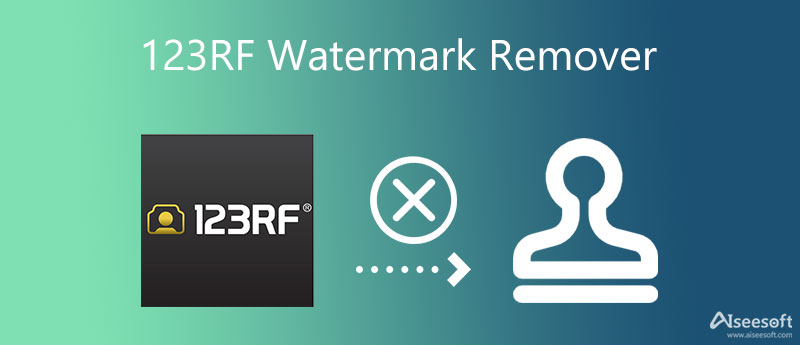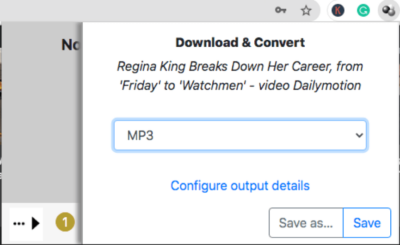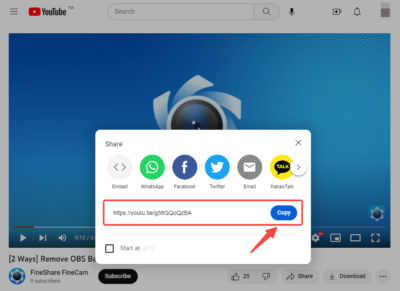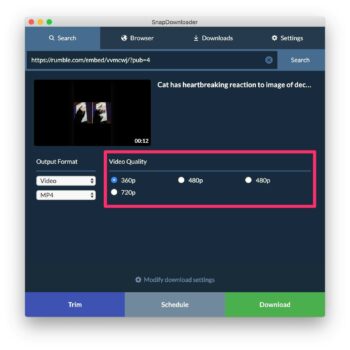1. Introduction:
Watermarks play a crucial role in protecting copyrighted content on platforms like 123RF. However, there are instances where removing watermarks becomes necessary for specific use cases. This outline aims to provide guidelines and processes for removing watermarks on 123RF, ensuring that contributors and users understand the proper procedures involved.
In this outline, we will first explore the concept of watermarks on 123RF, their purpose, and their significance in safeguarding copyrighted content. We will then delve into the guidelines for watermark removal, including legal considerations, eligibility criteria, and the process of requesting watermark removal from 123RF.
Also Read This: Download from Rumble Effortlessly with This Tool
2. Understanding Watermarks on 123RF:
123RF (is a royalty-free site for stock photos). Don’t strain your eyes kids. Watermarks are meant to be on stock photos. Protects the high quality for purchase. I have an account with 123RF. So, yeah. Sorry, I don’t think this is anything.
— PaperTiger274 (@PaperTiger274) March 26, 2022
Watermarks serve as a protective layer over images and other media assets on 123RF. They are designed to deter unauthorized usage and provide a visual indication of the content's origin and copyright ownership.
1. Purpose of Watermarks: Watermarks are applied to images to safeguard against unauthorized use and to promote proper attribution. They typically consist of a semi-transparent overlay that contains the copyright symbol, the contributor's name or username, and sometimes the platform's logo.
2. Copyright Protection: Watermarks play a crucial role in protecting the copyright of contributors' content. By visibly displaying ownership information, watermarks discourage unauthorized copying, distribution, or use of the images without appropriate licensing or permissions.
3. Visual Deterrent: Watermarks act as a visual deterrent to discourage individuals from using watermarked images without obtaining the necessary license. The presence of a watermark reminds users that the image is protected by copyright and requires proper authorization for use.
4. Evaluation and Licensing: Customers browsing 123RF can assess the quality, composition, and suitability of watermarked images before making a licensing decision. Watermarks allow customers to preview the content without providing full access to the high-resolution, unmarked version until a valid license is obtained.
5. Promoting Attribution: Watermarks encourage proper attribution by clearly identifying the copyright owner and the source of the image. When customers license an image, they are typically required to remove the watermark and provide appropriate credit to the contributor according to the licensing terms.
6. Limitations of Watermarks: While watermarks provide an extra layer of protection, they are not foolproof. Skilled individuals may still attempt to remove or obscure watermarks, but doing so would constitute copyright infringement and may have legal consequences.
It is essential for both contributors and users on 123RF to respect the purpose and integrity of watermarks. Contributors can rely on watermarks to protect their copyrighted content, while users can appreciate the importance of obtaining proper licenses and giving appropriate attribution when using licensed images.
This video shows how to Removing Watermarks on 123RF: Guidelines and Processes:
Also Read This: How to Build a Portfolio on Behance: A Comprehensive Guide
3. Guidelines for Watermark Removal:

Removing watermarks from images on 123RF requires adherence to specific guidelines and considerations to ensure that copyright and intellectual property rights are respected.
1. Legal Considerations and Permissions:
a. Verify Copyright Ownership: Only the copyright owner or authorized individuals have the right to request watermark removal. Ensure that you are the rightful owner of the content or have obtained the necessary permissions from the copyright owner.
b. Appropriate Use Cases: Watermark removal should be limited to specific use cases where it is explicitly allowed or required. Follow the licensing terms and guidelines provided by 123RF to determine the circumstances under which watermark removal is permitted.
2. Eligibility Criteria for Watermark Removal:
a. Contributor Status: Typically, only active contributors who have uploaded their own content to 123RF are eligible to request watermark removal. Ensure that you meet the requirements to request the removal of watermarks from your own content.
b. Compliance with 123RF Guidelines: Follow the specific guidelines and criteria set by 123RF regarding eligibility for watermark removal. These guidelines may include factors such as image quality, licensing status, and compliance with platform policies.
3. Requesting Watermark Removal:
a. Initiate the Request: Follow the designated process outlined by 123RF to initiate a request for watermark removal. This may involve filling out a form or contacting the support team directly.
b. Provide Required Information: Submit all necessary information to support your request, such as the image ID, your contributor details, and a clear explanation of why watermark removal is required.
c. Contact 123RF Support: If you encounter any issues or require further assistance during the watermark removal process, reach out to the 123RF support team for guidance and support.
It is crucial to familiarize yourself with 123RF's specific guidelines for watermark removal, as they may have variations or additional requirements depending on the platform's policies and practices. Following these guidelines will help ensure that watermark removal is conducted within the framework of copyright law and platform regulations.
Also Read This: How to Increase Sales on Shutterstock: A Comprehensive Guide
4. Processes for Watermark Removal:

The process of watermark removal on 123RF involves several steps to ensure the proper handling of copyrighted content.
1. Verification and Review:
a. Eligibility Assessment: 123RF will review the request for watermark removal to verify the eligibility of the contributor and the content. They will ensure that the request aligns with their guidelines and that the content meets the necessary criteria for removal.
b. Ownership Verification: The platform may require proof of ownership or appropriate permissions for the content. This may include providing documentation, such as a signed release form or other legal documentation, to validate your rights to the content.
2. Watermark Removal Methods:
a. Automated Processes: In some cases, 123RF may have automated processes in place to remove watermarks from eligible images. These processes employ advanced algorithms to detect and remove the watermarks while maintaining the image's integrity.
b. Manual Removal: For certain cases that require manual intervention, 123RF's staff or authorized personnel will carefully remove the watermarks from the approved content. Manual removal ensures accuracy and quality control in the process.
3. Timeframe and Processing:
a. Processing Time: The timeframe for watermark removal can vary depending on factors such as the volume of requests and the complexity of the content. The platform will provide an estimated timeframe for the removal process.
b. Communication and Updates: Throughout the process, 123RF will communicate with the contributor, providing updates on the status of the request and any additional information or steps required.
It is important to note that the specific processes for watermark removal may vary depending on 123RF's policies and practices. Contributors should follow the guidelines provided by the platform and maintain open communication with 123RF's support team for any clarification or assistance needed during the watermark removal process.
By following the established processes, contributors can ensure that watermark removal is conducted in a legal and proper manner, respecting copyright regulations and protecting intellectual property rights.
Also Read This: A Step-by-Step Guide to Cancel Bandcamp Subscription
5. Best Practices and Considerations:
When requesting or conducting watermark removal on 123RF, it is essential to adhere to best practices and consider important factors to ensure the proper handling of copyrighted content.
1. Proper Attribution and Usage Guidelines:
a. Communicate Attribution Requirements: After watermark removal, it is crucial to clearly communicate any attribution requirements or guidelines associated with the content. This ensures that proper credit is given to the copyright owner as per the licensing terms.
b. Educate Users: If you are a contributor, educate users on the correct usage and attribution of the content without the watermark. Provide clear instructions on how to credit the content and where to find additional information if needed.
2. Respecting Intellectual Property Rights:

a. Copyright Compliance: Ensure that the watermark removal request is made in compliance with copyright laws and regulations. Only remove watermarks for content that you have the rights to or have obtained appropriate permissions for.
b. Respect Third-Party Rights: If the content includes recognizable individuals, trademarks, or copyrighted materials belonging to third parties, ensure that you have obtained the necessary releases or permissions before removing watermarks.
3. Transparency and Communication:
a. Clear Documentation: Keep records of any permissions, releases, or agreements related to the content and watermark removal. This documentation can help resolve any potential disputes in the future.
b. Prompt Communication: Respond promptly to any inquiries or requests from 123RF during the watermark removal process. Maintain open and transparent communication to ensure a smooth and efficient resolution.
4. Compliance with 123RF's Guidelines:
a. Follow Platform Guidelines: Familiarize yourself with 123RF's specific guidelines for watermark removal and ensure compliance with their requirements. This includes eligibility criteria, submission processes, and any additional instructions they provide.
b. Seek Support when Needed: If you have any questions or concerns regarding watermark removal, reach out to 123RF's support team for guidance and clarification. They can provide assistance and ensure that you navigate the process correctly.
By adhering to these best practices and considerations, contributors can demonstrate their commitment to copyright compliance, responsible usage, and respect for intellectual property rights. This fosters a positive environment for creators and users on the 123RF platform, promoting the proper handling of copyrighted content.
Also Read This: The Complete Guide on How to Get Verified on iFunny
FAQ:
Q1. Can I remove watermarks from 123RF images?
ANS: No, you cannot remove watermarks from 123RF images. Watermarks are used to protect the copyright of the images and prevent them from being used without permission. If you remove the watermark, you are violating the copyright of the image and could be subject to legal action.
Q2. What are the consequences of removing watermarks from 123RF images?
ANS: If you remove watermarks from 123RF images, you could be subject to legal action by 123RF or the copyright holder of the image. You could also be banned from using 123RF in the future.
Q3. What are the guidelines for using 123RF images?
ANS: The guidelines for using 123RF images are available on the 123RF website. These guidelines explain how you can use 123RF images legally and ethically.
Q4. What are the different types of licenses available for 123RF images?
ANS: There are three types of licenses available for 123RF images:
- Royalty-free: This license allows you to use the image for any purpose, but you must still credit the photographer.
- Rights-managed: This license gives you more control over how the image is used. You can negotiate the terms of the license with the photographer.
- Extended license: This license gives you the right to use the image for commercial purposes.
Q5. How do I find out what license an image is available under?
ANS: The license for an image is always listed on the image page on the 123RF website.
Q6. What happens if I use a 123RF image without a license?
ANS: If you use a 123RF image without a license, you are violating the copyright of the image and could be subject to legal action.
Q7. How can I contact 123RF if I have questions about licensing?
ANS: You can contact 123RF customer support if you have questions about licensing. You can reach customer support by email or by phone.
Q8. How do I report a copyright violation on 123RF?
ANS: If you see an image on 123RF that you believe is being used without permission, you can report it to 123RF. You can report a copyright violation by going to the 123RF website and clicking on the "Report Copyright Violation" link.
Q9. How does 123RF protect its copyright?
ANS: 123RF uses a variety of methods to protect its copyright, including watermarks, digital signatures, and Content ID.
Q10. What are the benefits of using 123RF images?
ANS: There are many benefits to using 123RF images, including:
- A large selection of high-quality images
- Affordable pricing
- Easy-to-use licensing system
- Excellent customer support
Conclusion:
Removing watermarks on 123RF requires following specific guidelines and processes to ensure the proper handling of copyrighted content. By adhering to these guidelines, contributors can request the removal of watermarks for their eligible content, while users can appreciate the importance of obtaining proper licenses and providing appropriate attribution.
The process of watermark removal involves verification and review by 123RF to ensure eligibility and ownership of the content. Watermarks can be removed through automated processes or manual intervention by authorized personnel. The timeframe for watermark removal varies depending on the volume and complexity of requests.














